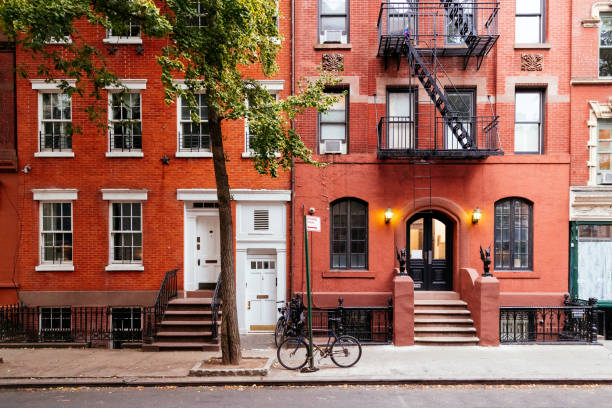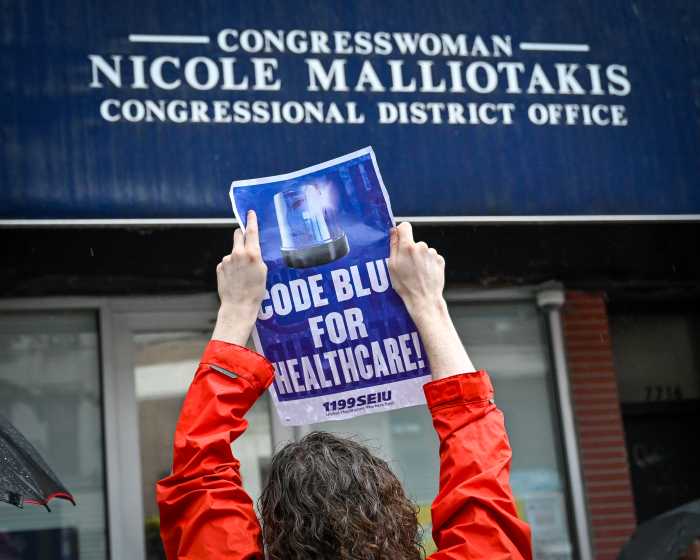By Bonnie Rosenstock
Urban Art. Street Art. Mural Art. Aerosol Art. Spray Art. Guerilla Art. Tag Art. Call graffiti what you will — but there’s no denying it’s a big part of life in NYC (whether we realize it or not). That sentiment was expounded by painter/photographer Shell Sheddy.
Sheddy, who prefers to be called “an art activist,” is the curator of “GRAF: Reading the Writing on the Wall; images of the L.E.S. 1968 to present,” an overview of this contentious art form (currently showing at the Tompkins Square Park Library Gallery).
Sheddy, who has installed exhibits at the library and at other venues, likes to create themed shows that talk about our surroundings. Given that the whole history of the Lower East Side is intertwined with political, social and personal expressions of graffiti, Sheddy realized this was a natural subject. “Sometimes it’s to speak out about something that’s wrong. Sometimes it’s creating something the community can rally around, like hardships, times of greed, overdevelopment and destruction, and finding ways to fight back — whether it’s making murals or doing something in the community gardens. Sometimes it’s just to say that you are present,” she explained.
Because of the negative connotations of the word “graffiti,” Sheddy went back to its Latin roots to play with “graf” and “graph” (which means to inscribe, write, put a mark down); to, she clarifies, “make your presence known. I thought it was important to address the images and do this show to present all the variations of graffiti since it is treated as ‘criminal mischief’ instead of ‘artistic expression.’”
Jane Weissman, co-author with Janet Braun-Reinitz of “On the Wall: Four Decades of Community Murals in New York City,” also acknowledged that graffiti is “a loaded word.” She and Braun-Reinitz are involved with Artmakers — the artist-run, politically oriented community mural organization. “We try to stay away from the word ‘graffiti artist,’ which to so many people means tagging, which we all agree is vandalism. Graffiti artists who work with community groups and create community murals, like Lady Pink, Tats Cru and Lee Quinones, are ‘aerosol artists’ who wield the can in lieu of the paintbrush in the name of ‘fine art,’” said Weissman.
However, Sheddy (who has an autographed copy of Weissman’s book) noted that not all muralists use aerosol; some use paintbrushes and stencils. She agreed that what she terms “ego tags” have denigrated the form, but believes that sometimes it can add something to a wall or mural that integrates it. “When someone scribbles initials or names without interesting letters across something, like a beautiful old building or someone else’s art, that is invasive and disrespectful to your work. But I liked the subway cars being covered.”
The list of participating graf luminaries is an ongoing, evolving process similar to the art form’s ephemeral character (so works might be added throughout the run). “The nature of street art — graffiti, murals, tags, stencils, stickers, light chalk, projecting lights onto sidewalks — is change,” she explained. “Graf is a transient medium. Even muralist community-based art makers understood that the murals would not last, except perhaps in memories and photographic documentation,” Sheddy said. “It would be wonderful if they could stay there forever, but even the artists paint over their own murals.”
Apocalynn, a resident of the Lower East Side who is of Cherokee descent, defines herself as a spray artist. Her original panels, which are imbued with Native American symbols, animals and spirits, hark back to the 1980s. Juan Carlos Pinto’s extraordinary portraits of John Lennon, Martin Luther King, Salvador Dali and Bob Marley (which appeared on subway station walls) are composed entirely of cut up, recycled MetroCards.
One corner of the gallery is devoted to “public art/private collection,” through five works by Leviticus — including a broken down wooden stool with his trademark orange lines and yellow signature, and a particle board De La Vega, “Become Your Dream” with signature fish drawing.
Peter Missing, who is back from Berlin, is still “missing,” but at least one of his works will eventually appear. His symbol of an upside down wine glass with three strikes crossed and the message “the Party is over” was ubiquitous on the walls and sidewalks of the East Village in the 1980s.
Rebecca Lepkoff, Silviana Goldsmith, Marlis Momber and Paul Adrian Davies provide lingering memories and photographic documentation. “It’s a good thing I have the best street photographers of the neighborhood representing the images that surrounded us and helped to define our neighborhood from the late 1960s to the present,” said Sheddy. She was born on the Lower East Side, left as a child, and moved back to the East Village as an adult in 1989. Her wall of striking color photographs on foam core depict artists at work — murals and tags on a plenitude of surfaces all throughout the Lower East Side.
The youthful, prolific Sheddy, blessed with a curly black mane, an infectious laugh, quick wit and mind, was the “She” graffiti artist of an earlier era (but she’s not exhibiting any of these works). She did a series in the subway and upstate called “She walks and talks, like she actually is one” — her lady series (spoken word and drawings of a woman’s face in fuchsia paint). “It was a boy’s world, which is why I did it. It was extending myself to put it out there and see how people reacted to it. First, there is nothing on the wall, and then boom, the next day there it is,” she said. “A lot of times when dealing with graffiti, you don’t have permission; you have to give yourself permission,” she laughed.
Sheddy installed a pull down roll of heavy construction paper on a wall. “When the artists found out about the show, they were like, ‘how great, a blank wall,’ and the library people were like, ‘oh, no, a graffiti show,’ panic. The best thing would be if they could paint directly on the library wall. We compromised and will have something that can be taken away,” she said with a mischievous laugh. Oh, the temptation.


































